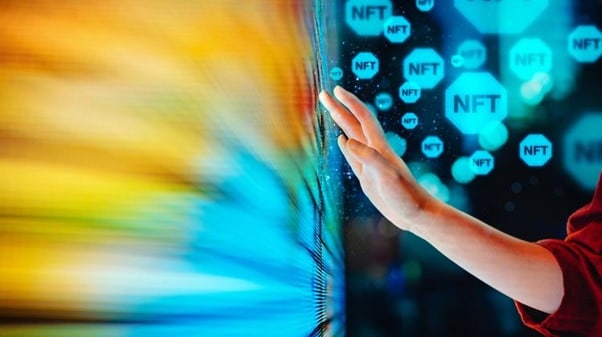NFTs are expanding. Users that are interested in non-fungible tokens currently tend to think of them as cryptocurrency tokens that include digital art or cryptocurrency development companies. The way we produce, share, and consume digital material will alter soon as a result of NFT development. Numerous DRM (Digital Rights Management) use cases will be included in NFT commercial use cases.
Users can better appreciate the subtleties of each form of NFT and the many blockchain protocols involved by understanding NFTs and the token standards that underpin this phenomenon. Numerous consumer apps are based on Ethereum’s ERC721, which was the first NFT standard to be made available. Digital users and artists may not always be aware of the specific token standard or blockchain they are using when they mint or produce NFTs through third-party services.
Table of Contents
Ethereum Blockchain
The ERC721 Ethereum-based standard for non-fungible tokens was the first. The most popular blockchain platform for developing and launching NFTs is Ethereum, which established itself as a pioneer in this field. The Flow and Tezos blockchain systems, however, are coming up quickly and are likely to surpass Ethereum soon.
On all blockchain networks, transactions have a cost, which is typically insignificant. On Ethereum, “gas” is used to complete transactions. The founders of Ethereum did not anticipate that the price of ETH would increase to the extent that it would make it prohibitively expensive to conduct transactions on the platform when the gas was set to the price of ETH on the open market at the time of creation. As of the time of writing, creating an NFT on Ethereum in accordance with the ERC721 standard costs more than $80.
Solidity is the native language of Ethereum. Ethereum began off with a proof-of-work consensus system and intends to move to a proof-of-stake system.
ERC 721 standard
The most popular standard token that served as the foundation. Each ERC721 token is distinct and can be traded separately; they are not fungible. This is why special digital assets, like a piece of digital art created by an artist, can be kept in such a token. Tokens are one-of-a-kind and cannot be destroyed or copied. Due to the scarcity and uniqueness of each token’s attributes, each one might be regarded as a collectible. This established the first non-fungible token standard.
ERC 998 and ERC 1155 standards
The ERC998 and ERC1155 standards are two significant non-fungible token standards on Ethereum that are not as widely used as the ERC721 standard.
Because they are both non-fungible, ERC998 and ERC721 tokens are comparable. Additionally, ERC998 tokens are “composable,” which means that the assets included in this class of tokens can be combined or arranged into complicated positions and traded through a solitary ownership transfer.
Unique non-fungible tokens (like ERC721) and standardised fungible tokens (like ERC998) can both be found in an ERC998 token (such as ERC20). It is possible to exchange and value the ERC 998 token. The ERC998 token can be viewed as a portfolio of assets or as a holding company for a variety of assets because it can contain a single set of digital assets.
This token standard was created with the idea of using non-fungible things to represent in-game collectibles and marketable assets and fungible tokens to represent transactional cash in video games.
The Ethereum governance committee is now considering a number of alternative token standards, such as ERC 1190, which allow for the creation of flexible and complicated NFTs.
Blockchain Flow
We must start with Cryptokitties in order to comprehend Flow. ERC721 tokens were used in the launch. It gained so much traction that the Ethereum blockchain network got congested.
In an effort to address this issue, the game’s development team (Dapper Labs) established Flow, a blockchain that was built with gaming and crypto collectibles in mind. NBA Best Shot, a very well-liked NFT-based digital collectibles platform, was also designed by Dapper Labs. The proof-of-stake consensus technique is used by Flow.
Flow-NFT protocol
The Flow language, Cadence, is used to create smart contracts on the Flow network. The process permits “Upgradable Smart Contracts,” or smart contracts that may be implemented in a “beta state” and thereafter upgraded progressively by the original authors until they are pleased.
Users will be informed that this smart contract is not yet finished, and they can decide to hold off on trusting it until it is. The smart contract’s original creators can release control irrevocably once they are pleased with the code, at which point it becomes immutable. Scalability is a feature of Flow.
Blockchain Tezos
The liquid-proof staking consensus technique is used by the decentralized blockchain Tezos. The native cryptocurrency of Tezos is called Tez. The platform’s developers understand that for widespread acceptance and user-friendliness, transaction fees must be cheap. Only FA2 is non-fungible out of the three basic token specifications used by Tezos.
FA2 benchmark
A universal token contract interface called the FA2 Token Standard, also known as TZIP-12, allows a variety of token kinds, including fungible, non-fungible, non-transferable, and multi-asset contracts.
Developers have a great deal of freedom to create novel token types that can handle intricate token interactions while still keeping a uniform API for third-party applications and wallets. These token structures may comprise NFTs and include a variety of game components with interchangeable and interactive aspects.
Conclusion
Although Ethereum was the first blockchain platform to support NFT development, it was not designed with NFT in mind. NFT was put first in the development of platforms like Flow and Tezos. There will undoubtedly be more NFT standards available in the near future.

About the author